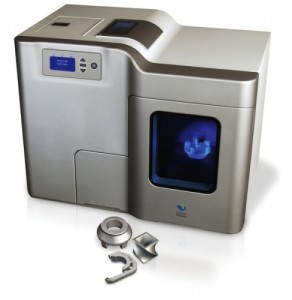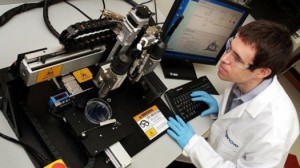3D Printing Coming To Your Life
We are incredibly lucky to be living in the golden age of technology, where things that we once knew were impossible are becoming reality. Thirty years ago, would anyone have ever imagined that you could create a 3D file in a computer, and immediately create a corresponding object? Even though most people have never seen them in action, 3D Printers have actually been around for over a decade. While most uses to date have been industrial, this technology is becoming more affordable and making it’s way into many of our offices and living rooms.
3D Printing is a form of additive manufacturing, as opposed to subtractive manufacturing. Subtractive manufacturing is what we’ve been doing for thousands of years; cutting, drilling and shaping objects from metal and other materials. This is not only more time consuming, it also wastes up to 90% of the material byproducts. Additive manufacturing requires less raw materials, less assembly, and allows the flexibility of creating the same object in many materials.
There are several different ways to bring ideas, tools, and objects to life. The common denominator to date is a steady layering of different materials to create a final product. The more popular methods being used today include:
a) melting powder with heat or lasers into strong metal or plastic objects
b) slowly layering molten liquids such as polymer into a support structure and allowing them to ‘cure’ into solids
c) mechanically shaping extremely thin layers of paper, polymer or metal and then joining them together with an adhesive
Here’s a cool video on one of the methods.
The real world applications for a 3D printer are phenomenal, and we’re only scratching the surface of their capabilities. I can see this technology immediately helping companies to not only reduce shipping costs, but their carbon footprint associated with the entire process of production and shipping. Some of the many useful everyday items that can come seemingly out of thin air include:
1- Auto parts, especially for older models with rare parts
2- Jewelry for the ladies
3- Footwear customized for your foot
4- Architecture for affordable, detailed, low-cost scale models
5- Engineering parts to check their size and fit before mass production
6- Spacecrafts or military vehicles equipped to create necessary parts on board
7- Dental uses including creating quick crowns and replacement teeth!
8- Medical in hearing aids and Doctors tools
9- Educational objects including blocks and learning aids
10- Lightweight Aircraft components, saving gas and increasing efficiency
11- And of course, Sad Keeanu Reeves action figures
The most intriguing future application, albeit probably not suited for home, is that of tissue engineering or printing body parts. Layers of live cells in gel form would be inserted into the printer and slowly built up to form usable, three dimensional bones and organs. Waitlists will be greatly reduced, lives will be saved, but are we playing God?
“It will become just as cheap to create single items as it is to produce thousands. Thus undermining economies of scale. It may have as profound an impact on the world as the coming of the factory did. Just as nobody could have predicted the impact of the steam engine in 1750, or the printing press in 1450, it is impossible to foresee the long-term impact of 3D printing. But the technology is coming, and it is likely to disrupt every field it touches.” -The Economist
In a world where we can download products and print them out at home, how will we curb counterfeiting? Look at what’s happened with music and movies as they’ve gone digital. Just as digital piracy is a major issue in the world today (PIPA), how will we deal with physical piracy? Could this also make craftsmen extinct once and for all? Would this be the final exclamation point on the end of handmade objects?
If we can make working body parts in a machine, can we extend this to edible applications? This topic opens up a gigantic can of worms. What are your thoughts on the idea? What else is possible to print? Let us know what you think and check back later this week as we delve deeper into the possibilities.
Comments
Tags: 3D Printer, 3d printing applications, future tech, PIPA, playing God?, print body parts, print food, things you can print in 3d, tissue engineering
Trackback from your site.


